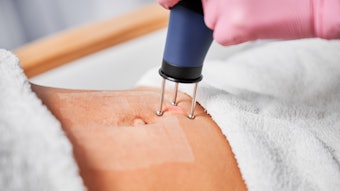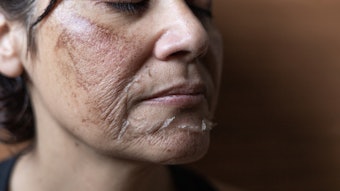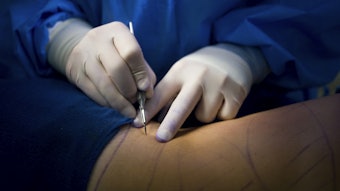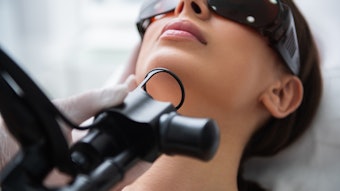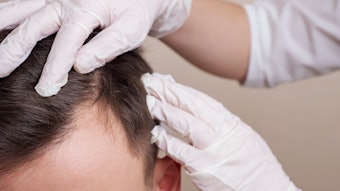Where to begin
Dermatologists weigh sequence and timeline for multimodal cosmetic treatments.
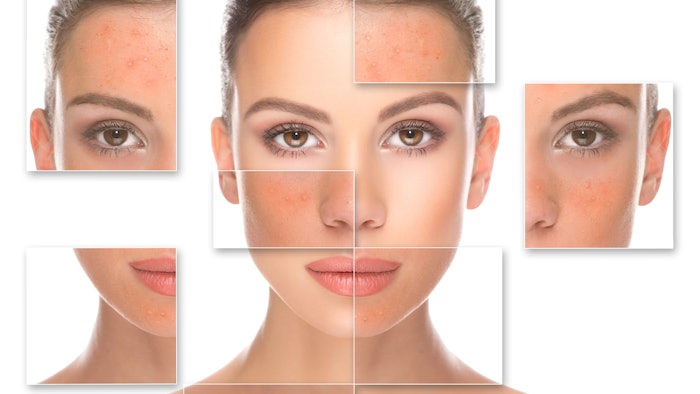
Dermatology patients enjoy myriad options for multimodal cosmetic treatments, many of which can be completed with minimal risk. Successfully managing that risk falls to board-certified dermatologists who give first consideration to the order and timing of treatments.
With numerous modalities available to optimize procedures and minimize complications, careful planning for the “when and how” of combining treatments can lead to greater success, said Zakia Rahman, MD, FAAD, clinical professor of dermatology at Stanford University School of Medicine in California.
“The first step that cannot be overstated is proper planning, which includes advance review of patient schedules by the entire dermatology team, including front desk staff, medical assistants, nurses, trainees, and dermatologists,” Dr. Rahman said. “I recommend a daily huddle to prepare the team to communicate effectively and be aware of any potential issues to resolve with supply of neuromodulators, filler, and lasers.”
Although multimodal management requires additional education and experience, most patients suffering from a dermatologic disorder — common or not — are initially presenting at their local dermatologist’s office. Dr. Rahman and colleagues encourage learning the basics to help better understand and treat their patients.
What’s the skin-ny?
 Zakia Rahman, MD, FAAD
Zakia Rahman, MD, FAAD
Skin resurfacing remains the gold standard for the treatment of intrinsic and extrinsic skin aging, Dr. Rahman said. When comparing different resurfacing modalities, she said fractional lasers improve the safety profile significantly by creating islands of tissue ablation and/or coagulation surrounded by normal skin. This allows for rapid re-epithelialization and repair of dermal-epidermal junction to mitigate risks of infection, scarring, and pigmentation (hypo or hyperpigmentation). Additionally, the use of botulinum toxin A prior to laser resurfacing treatments optimizes efficacy, she said. When using with ablative lasers, botulinum toxin A should be applied at least two weeks prior to treatment.
“There is evidence that use of botulinum toxin A on the day of a low-energy, low-percentage skin treatment with nonablative lasers is safe. However, if ablative resurfacing (fractional or fully ablative) or fractional nonablative resurfacing is performed at high intensities, neuromodulators should not be performed on the day of treatment,” Dr. Rahman said. “Therefore, pretreatment with neuromodulators at two weeks is the best approach.”
Dr. Rahman reminds dermatologists that the face has the highest density of pilosebaceous units, so the safety window is greater than off-face treatments. Fractional, nonablative laser devices with optimal scanning deliver more uniform treatments, she said, which reduces the risk of side effects such as redness and provides a more even healing process compared to stamp-type devices that can leave square, disjointed areas for weeks at a time.
Several medical devices play an important role as a modality in cosmetic treatments as do fillers for superficial rhytid blurring, deep volumization, and biostimulation (mesenchymal cell migration and differentiation, fibroblast proliferation, and neocollagensis), Dr. Rahman said. She recommends using artificial intelligence (AI) predictive modeling to evaluate the efficacy of hyaluronidase for filler-associated neurologic and visual complications. Hyaluronic acid fillers are the most common fillers associated with neurologic and visual complications, she said. However, there is no link between the total amount of filler used and the risk of complications.
“The most common sites for complications are the nose, followed by the forehead and glabella,” Dr. Rahman said. “Therefore, fillers in this area should be used with caution. Other modalities such as lasers and neuromodulators offer safer alternatives.”
Neck and neck
Although the face is at the forefront of many patients’ concerns, Shawna A. Flanagan, MD, FAAD, said the neck is often overlooked when patients want noninvasive cosmetic rejuvenation.
“When evaluating a patient, a board-certified dermatologist should always initiate conversations on including the neck and decollete in their rejuvenation plan starting at an early age,” said Dr. Flanagan, a dermatologist who practices in Jupiter, Florida. “This may just involve getting patients to use the same products, such as tretinoin or vitamin C products or even sunblock, on their neck and decollete as well as their face.”
 Shawna A. Flanagan, MD, FAAD
Shawna A. Flanagan, MD, FAAD
“When combining neurotoxin and fillers of the neck with a nonablative laser, such as intense pulsed light or a vascular laser, my personal preference is to do the laser after the filler and neurotoxin,” Dr. Flanagan said. “This is because the patient has a certain level of anesthesia from the fillers, and many of these nonablative lasers and light sources help with bruising. As such, the patient’s social downtime will be less as you are treating the bruises as well as their pigmentation or poikiloderma and rhytides.”
Similarly, when using several lasers or devices in one session, Dr. Flanagan said the order she recommends is to use the deeper device or laser first and follow with the more superficial penetrating device after.
“For example, a multifocused ultrasound (MFUS) procedure can be combined with a fractionated nonablative laser or an intense pulsed light the same day,” Dr. Flanagan said. “But I would do the MFUS procedure followed by the nonablative laser. Or, when combining an intense pulsed light device with a fractional laser, use the intense pulsed light device first, followed by the fractional laser.”
Additionally, Dr. Flanagan said, if patients have retraction of the chin and jawline, she recommends doing filler of the chin and jawline first and then reevaluate for other procedures on the neck.
“Just giving the chin more projection and the jawline more definition can improve a patient’s cervicomental angle and make the upper neck area look more youthful without having to do a tightening procedure,” Dr. Flanagan said. “Ideally, the filler and neurotoxin should be done two to four weeks prior to more invasive devices on the neck area.”
To achieve less social downtime and fewer postoperative complications, such as post-inflammatory hyperpigmentation commonly associated with Co2 ablative lasers, Dr. Flanagan recommends using a newer 2910nm cold ablative laser, like the UltraClear device. This tool can also take laser microcores to aid in tissue removal and contraction from the submentum and jawline. Again, when combining this with neurotoxin or filler, she said it is preferable to do the neurotoxin and filler two to four weeks in advance.
“There are many new and exciting options for noninvasive neck rejuvenation, and we, as board-certified dermatologists, should be letting our patients know it is never too early to address the aging neck,” she said.
Ignorance is not bliss
When skin disease is at the heart of cosmetic treatments, Dr. Rahman applies the same carefully sequenced approach. Melasma, for example, is a chronic condition that has significant impact on quality of life, she said. Optimized melasma treatment includes the use of broad-spectrum sun protection with tints to limit exposure to both visible and ultraviolet light. She recommends the use of a triple formula containing a retinoid, steroid, and 4% hydroquinone for the safest and most effective treatment of melasma.
For patients resistant to this therapy, Dr. Rahman suggests using oral tranexamic acid (TXA). TXA is an FDA-approved amino acid lysine derivative that prevents excessive blood loss in menses and with various surgeries.
“The off-label use of TXA for treatment-resistant melasma represents one of the greatest advancements in the treatment of this condition in years,” Dr. Rahman said. “TXA works through reduced plasmin activation by ultraviolet light, inhibition of melanosome transfer, reduced tyrosinase activity, inhibition of fibroblast growth factor-induced neovascularization, and reduced arachidonic acid production.”
Dr. Rahman recommends dermatologists complete a comprehensive risk assessment for thrombosis prior to initiation of therapy, which is usually at 325mg twice daily. TXA can be discontinued in patients who do not respond to therapy within three months. Dr. Rahman noted a more than 80% improvement in patients with use of oral TXA in treatment-resistant melasma.
Subcellular selective photothermolysis lasers using photoacoustic nanosecond or picosecond pulse durations at 1064 nm are the safest and most effective for the treatment of melasma, Dr. Rahman said. Treatments using larger spot sizes and lower fluences are best and should not be performed more frequently than every two to four weeks. Additionally, she said multiple treatments are required to significantly reduce melasma, and regular maintenance is necessary. A visible light laser or light device is contraindicated in melasma due to the risk of flare.
La vie en rose
For Alyx Rosen Aigen, MD, FAAD, rosacea responds well to multimodal treatments when delivered in the right order. Dr. Rosen Aigen is an assistant professor of dermatology at the University of Miami Miller School of Medicine in Florida.
Rosacea is a common condition, and it is important for doctors to understand the wide array of treatment options available to patients, Dr. Rosen Aigen said. Having access to more advanced treatments, such as lasers, energy-based devices, or the skill to perform the surgical interventions is incredibly valuable for patients.
“The first thing that you need to determine when you’re deciding on how to treat rosacea is what type of rosacea a patient has,” she said. “There are several different kinds of rosacea. The most common types are erythrotelangiectatic (ET) and papulopustular (PP) rosacea. There is also ocular rosacea and rhinophyma, which mainly involve the nose, but can affect other areas of the face as well.”
 Alyx Rosen Aigen, MD, FAAD
Alyx Rosen Aigen, MD, FAAD
“I like to combine intermittent topical therapy with either intense pulsed light or a vascular laser, such as our KTP laser for ET rosacea,” she said. “I typically perform three sessions of light-based therapy four to six weeks apart and then have patients on a maintenance laser treatment program afterwards.”
Medications like beta blockers can also be effective to help patients who have underlying flushing. For papulopustular rosacea, Dr. Rosen Aigen said it is important to get the patient on a good topical and possibly oral regimen depending on the severity.
“I typically like to use a compounded medication that includes ivermectin and metronidazole, and combine that with a similar laser treatment regimen,” she said.
For patients with more severe papulopustular rosacea, dermatologists may need to consider oral medications, such as doxycycline or isotretinoin, she said. Ocular rosacea is most often addressed with oral antibiotic therapy, but there is also evidence that laser therapy can be an integral part of the treatment regimen.
“I will often refer patients with ocular rosacea to ophthalmology to have a full eye exam performed,” Dr. Rosen Aigen said. “It is important when you are seeing patients with cutaneous manifestations of rosacea that you ask them about ocular symptoms to rule out ocular rosacea as there can be long-term complications of ocular involvement.”
For rhinophymatous rosacea, surgical intervention is often necessary. Dr. Rosen Aigen said she typically starts patients on a regimen of topical therapy, depending on their papulopustular involvement, and considers oral antibiotics as well while employing surgical interventions. The latter can include curettage to focal areas of the nose, fully ablative CO2 laser, or her favorite approach, which involves loop cautery with local anesthesia.
“Managing expectations is an essential part of caring for these patients,” she said. “Recovery from these procedures depends on the extent of treatment and can be anywhere from one to two weeks up to several months, depending on the extent of treatment. However, these treatments can often be life-changing for patients suffering from this form of rosacea.”
According to Dr. Rosen Aigen, alternative or complimentary therapies for patients with ET rosacea include micro neurotoxin injections. This is when dilute neurotoxin is injected superficially into the active red or flushed areas of the cheeks and sometimes forehead. These have been shown to reduce the underlying erythema and flushing.
Research is also underway, she said, to assess the benefit of adding radiofrequency with microneedling to vascular laser treatments. Both have been studied in combination with oral isotretinoin and shown to have some improvement for patients with recalcitrant PP rosacea.
The ideal patient for many of these interventions are individuals who have tried multiple topical therapies or courses of oral therapies without improvement or progression of symptoms, Dr. Rosen Aigen said.
“It is truly important to manage patients’ expectations of their rosacea, as there is really no cure for this condition, so it’s important to offer treatments that can improve the symptoms,” she said. “For a patient with rhinophyma, surgical intervention can be life-changing, and the optimal patient is someone who is ready and committed.”
Some patients struggle to find physicians who are willing or able to perform these multimodal treatments, so it is vital for dermatologists to be aware of how to treat this condition. If the lesions become big enough, it can impair a patient’s ability to breathe through their nose, and the impact to their quality of life is also significant, she said.
“Even if dermatologists don’t consider themselves cosmetically inclined, rosacea is such a common condition that having access to certain devices that can improve the patient’s outcomes and understanding unique treatments, such as dilute superficial neurotoxin, radiofrequency with microneedling, or surgical interventions for patients with rhinophyma, will improve patient outcomes and set board-certified dermatologists apart,” said Dr. Rosen Aigen.


